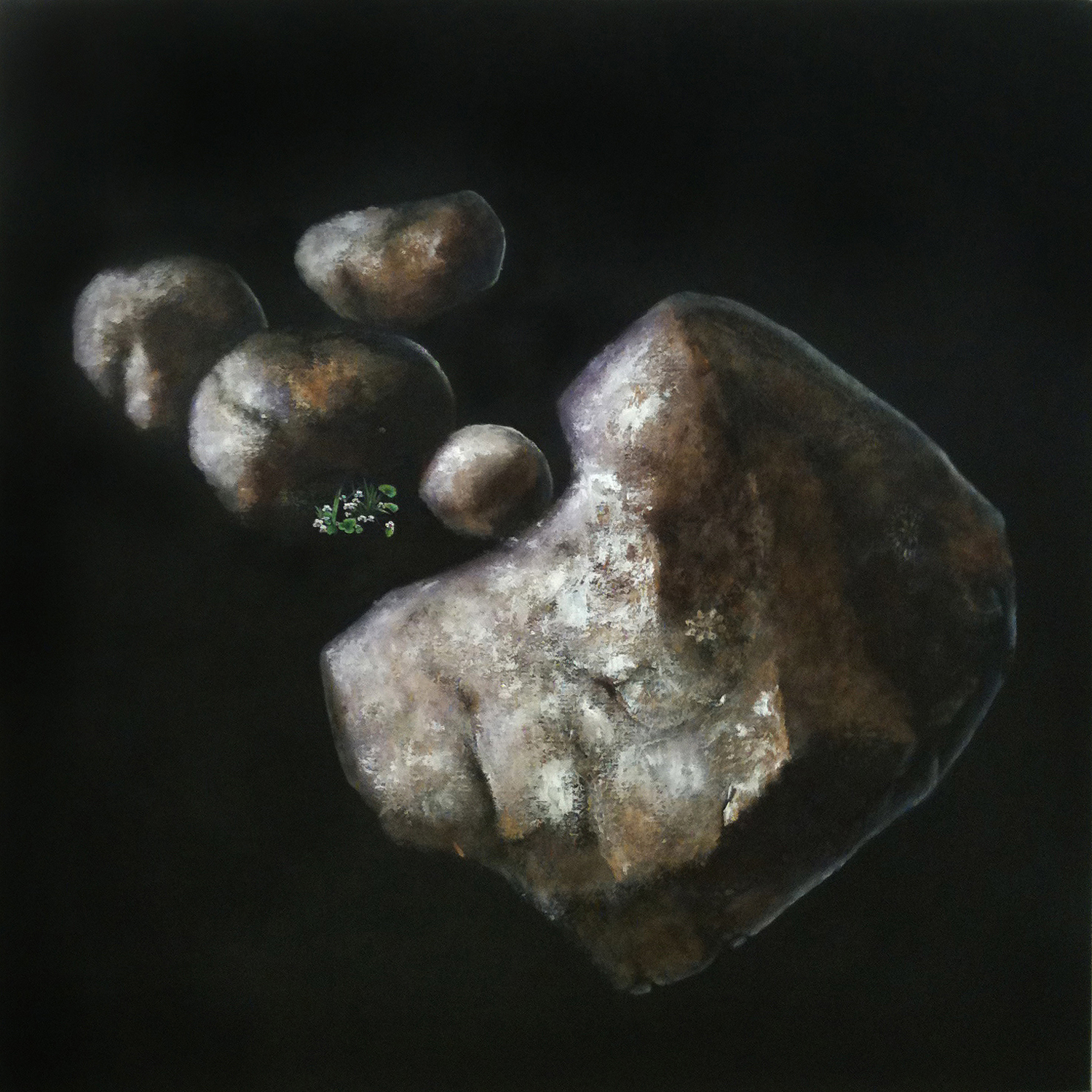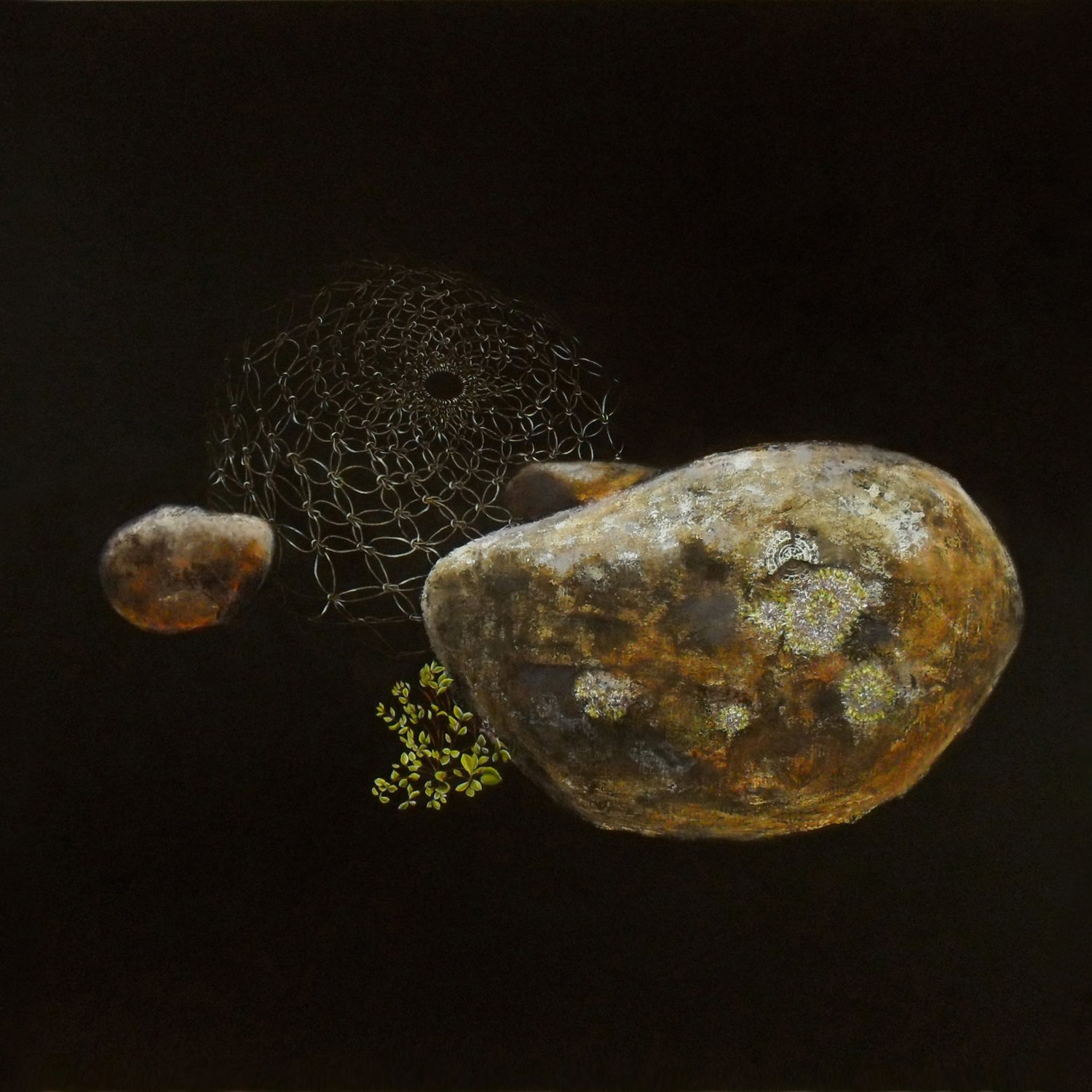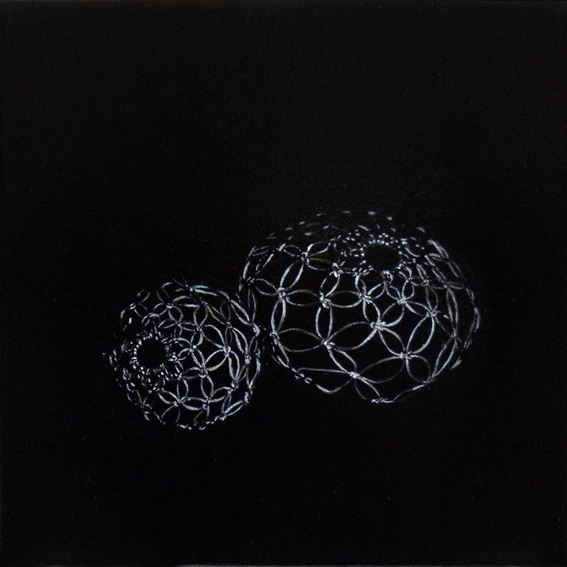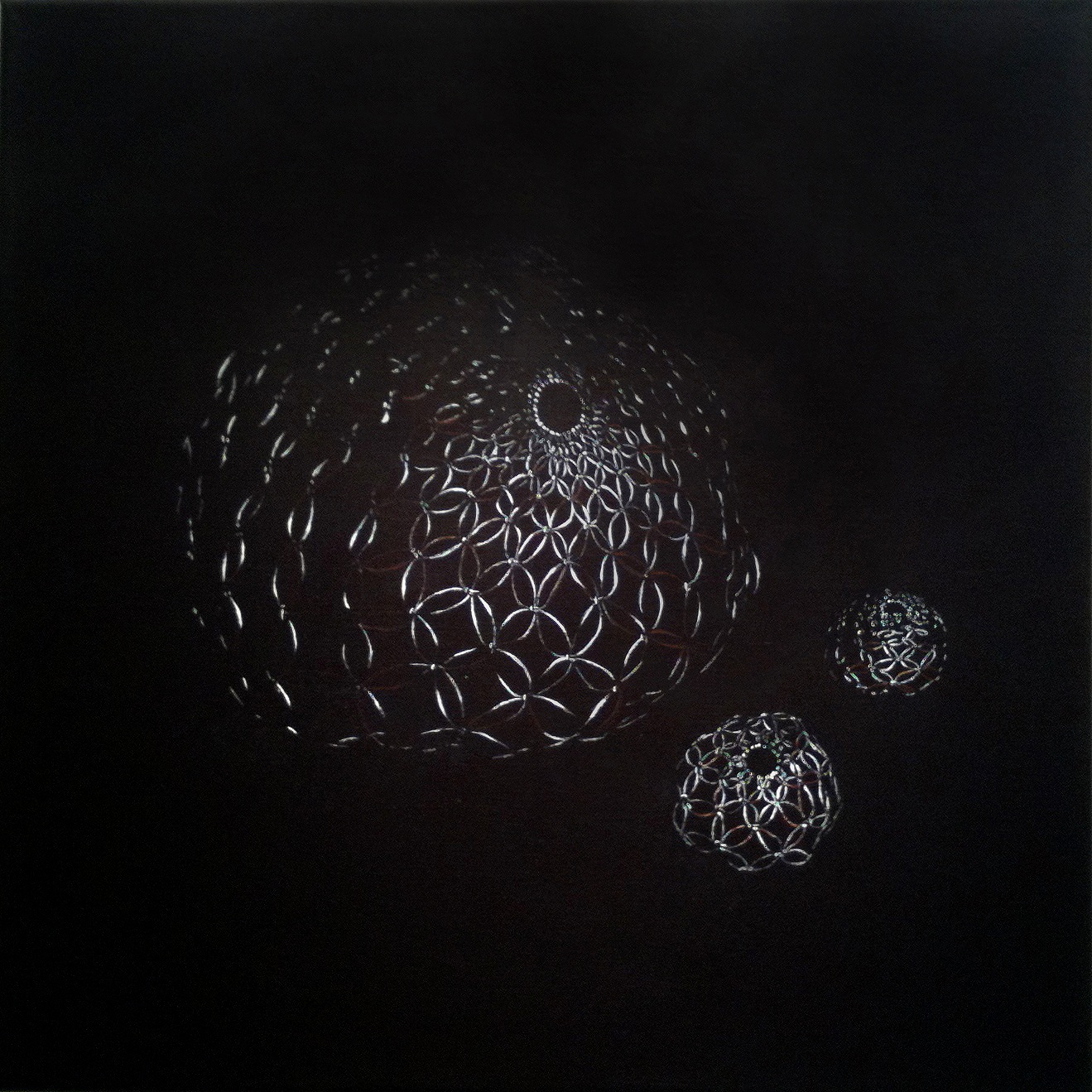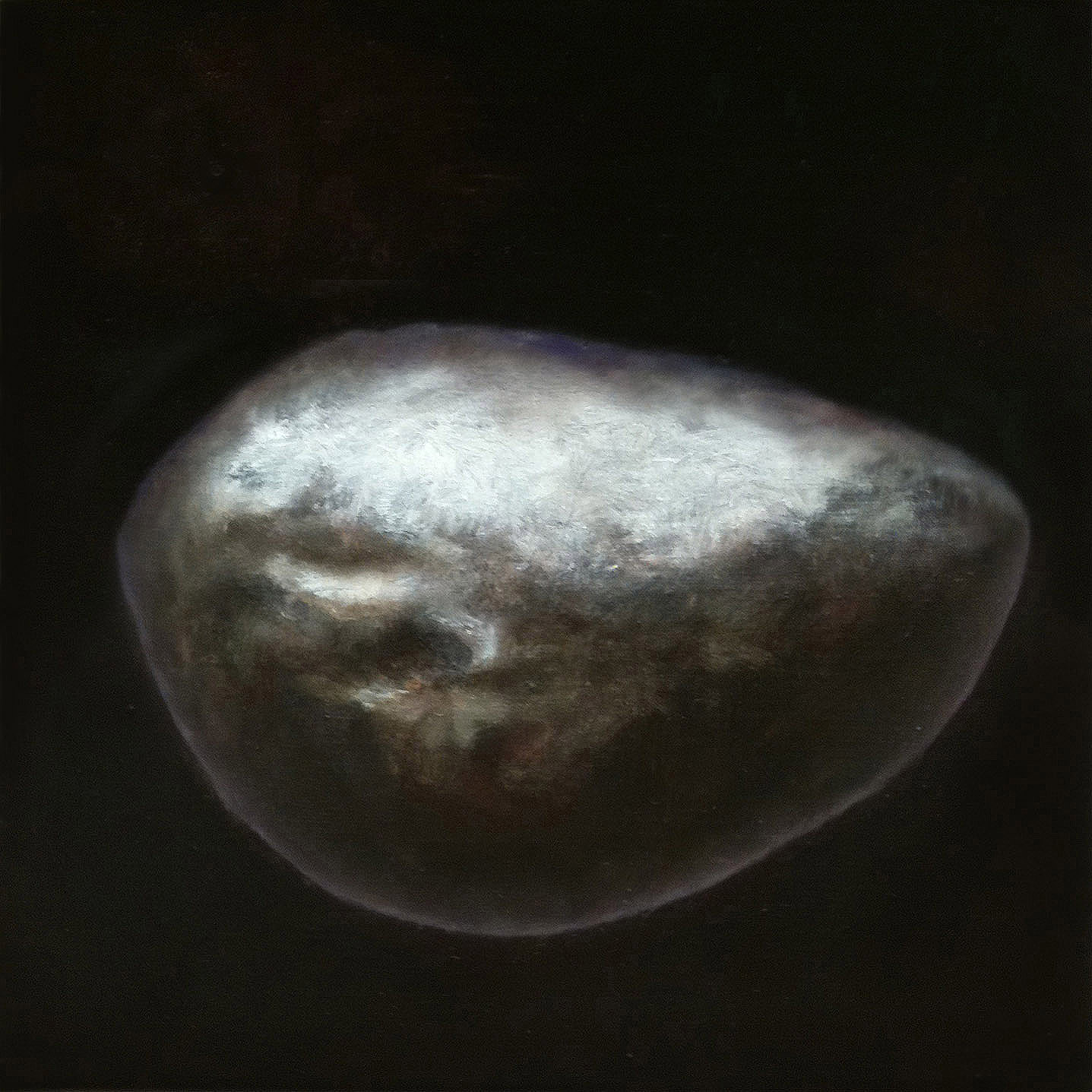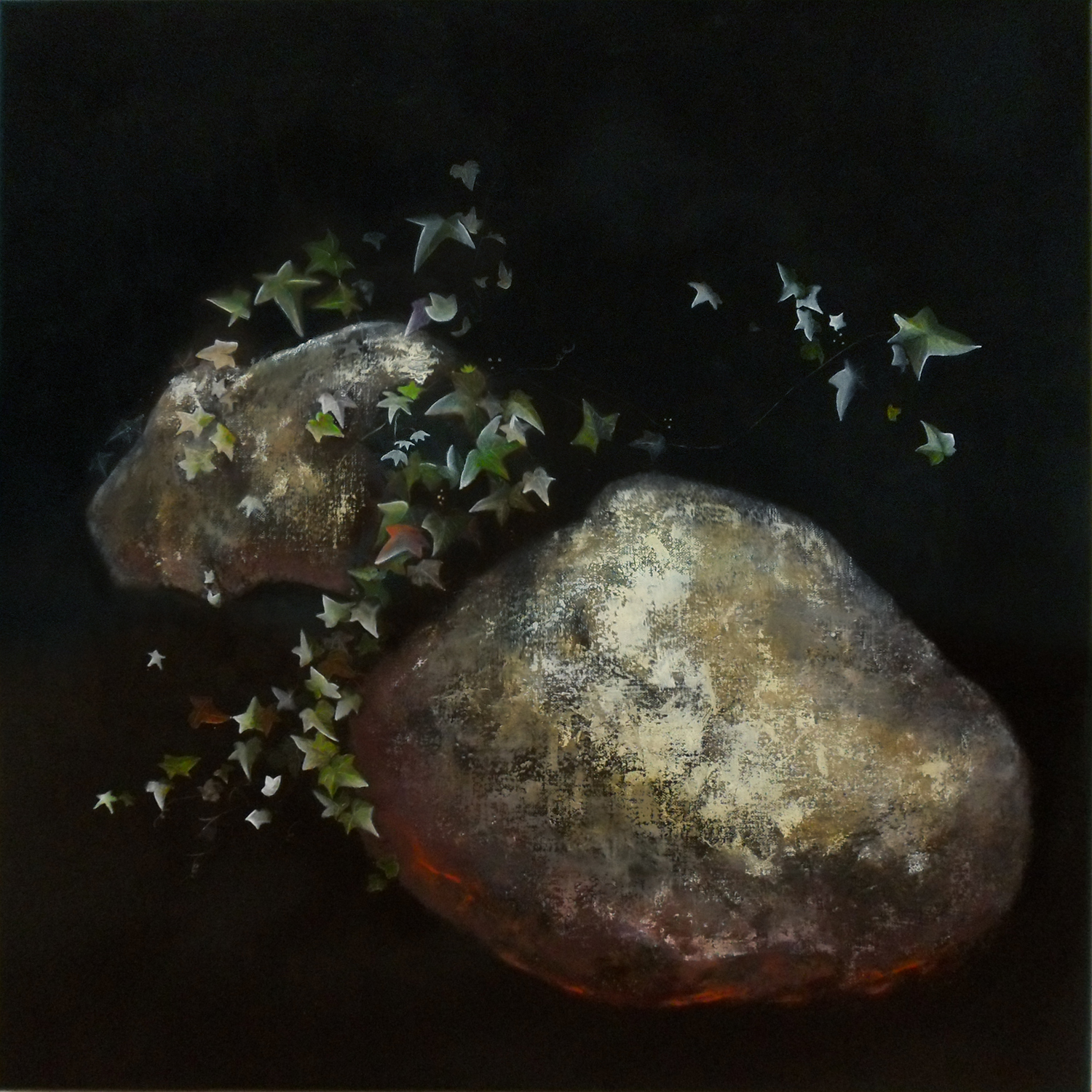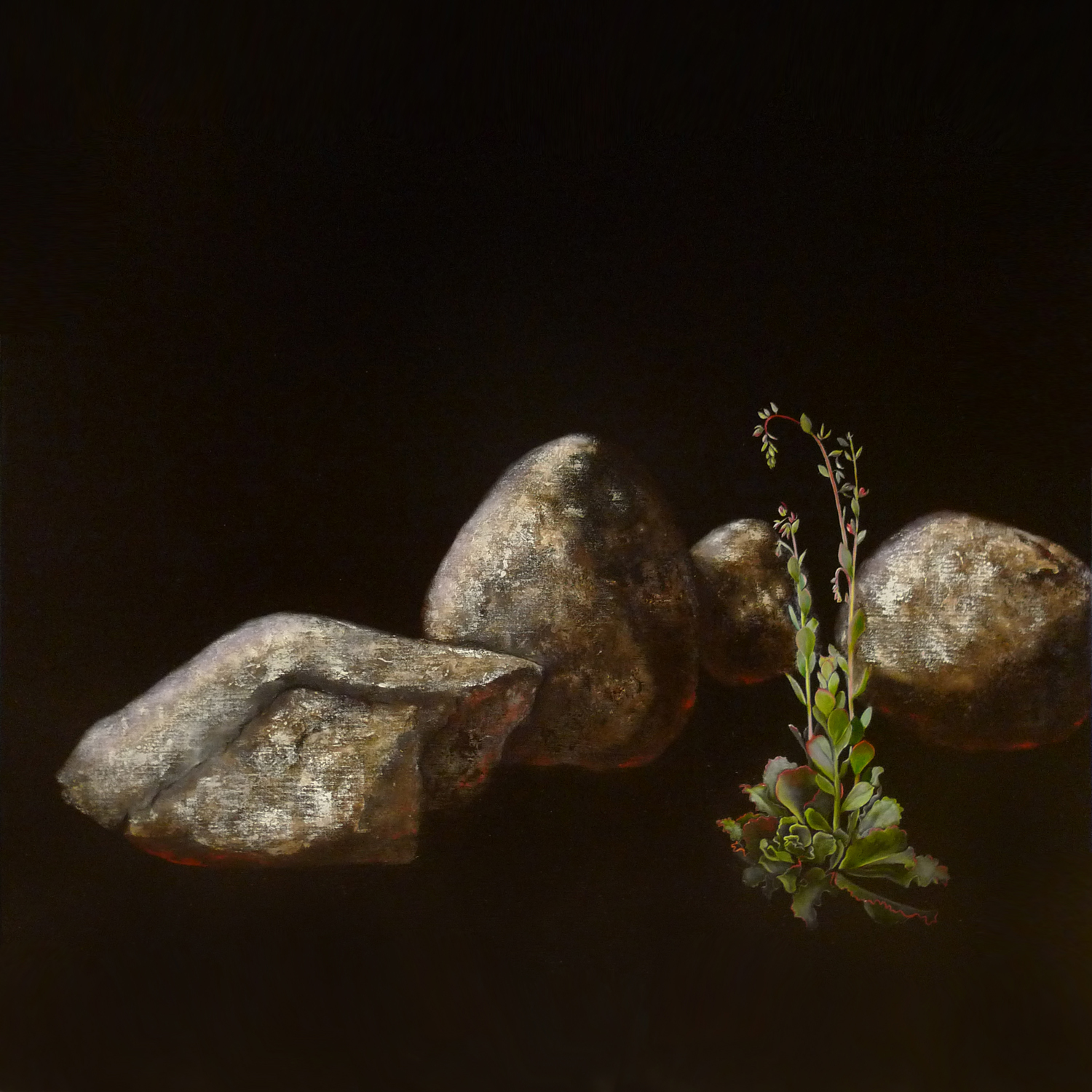Included here are some images of paintings of an exhibition held in and about Eltham, a semi-rural suburb to the north east of Melbourne. This project is a continuation of my interest in landscape design and the manipulation of the natural world, specifically the gardens of Gordon Ford (1918-1999) about whom I've been making work since 2007.
A longer explanation of the project is below, but first enjoy this gorgeous essay by Morag Fraser.
The rocks in her head
Some years back Penelope Aitken came wandering through my garden. That is how I met her. Lots of people do wander or blunder around our bit of bush—we have no fences—but this was no chance meander. I could see that she was doing something I recognise. She was, in Robert Dessaix’s deft phrase, loitering with intent.
Dessaix uses those words to describe the art of writing an essay, the patient art of staying with your random thoughts until you can finally own and give form to them—in words, or in paint or clay or marble or glass or silver, or, as in the case of our garden, in the rocks that form its bone structure, the great slabs and ovoids of basalt that were crow-barred in and laid down years ago by another artist, the landscape designer, Gordon Ford, and by Sam Cox, who ably continued what Gordon had begun.
Those rocks exert pressure on more than the ground: they push at the mind. They are solid yet eloquent, in their pocked and gnarled surface, of a tumultuous, molten geology. They are both dead and alive—paradoxical presences. Their cavities hold water, reflect light; their implacable surfaces play host to lichen, alive and imperceptibly spreading, hard as coral. They look as though they have been in place for millennia, as though they belong, a conspiracy abetted by the indigenous flora, the correas that creep around them and the dichondra that colonises the silt in their crevices.
It might be enough to luxuriate in their presence, be reassured by the way these great masses of stone seem to endorse gravity, make us secure on the earth of this ancient continent. But Penelope has known these rocks of Gordon Ford’s for decades, and she knows that they have come to be where they are not through some natural seismic event or the upthrust of time, but though art, and through the long, deliberate mental loitering of a man who thought about gardening, about landscape, by lying on his back and looking at cloud formations, at the apparently solid shapes of cumulus as they banked and swelled in his imagination. Basalt is not native to this district, and gardens have always been constructs, no matter how perfectly they have been contrived to imitate natural shapes, rhythms and asymmetrical alternations of mass and void (Gordon Ford’s structural imperative).
It is that paradox of art and representation or imitation that Penelope’s paintings explore and extend. She has taken Gordon’s rocks from their artful positioning in gardens, and flung them out into the space created by her velvet black backgrounds, or into a disorienting new environment of colour. She has played with their physics, shifted their gravitational field, pondered their origins, taken them back and forward in time, and re-emphasised their singularity, their elemental quality. She has reconceived their lichen as a woman might see it—as a lacy construction, doily-like. There is something very moving about that—the unapologetic acknowledgment of a connection between a homely craft and timeless biological patterning. Sometimes she has stayed so long, laboured so minutely over the surface of her basalt that one might read the works as simple homage to the beauty of a natural form. But she has also deliberately dislocated the forms, given them a new context, so that one feels the mind always at works in these paintings. Always pushing forward, outwards into a new space.
There is also joy to be had in seeing in Penelope’s painting what is always true about art, no matter how highly art-critical fashion lauds originality or rewards novelty: art builds upon art, it feeds on what has come before. Artists draw on traditions, find their influences, their stimulus in the work of other artists, and so often across modes and media. From rock to paint on canvas. Gordon often thought of the structural balance of a painting (‘occult balance’ he called it) in the same mind’s space as he placed the rocks and plants in his gardens. I know writers who use music: Puccini late in the day (with Callas singing) to relax, to let thoughts blend and reassemble, but Bach in the morning when they have to get down to the real business of making words fit together. African masks for Modigliani. Japanese gardens for Monet. Gordon Ford’s rocks for Penelope Aitken.
I think Gordon would smile to see where she has taken them—into what new universes. In her macramé works, ethereal, transparent, planetary forms, it is as though Penelope has refined Gordon’s rocks into mathematical orbs, and then released them into space. But even with these new shapes she ultimately circles back to nature, as the pearly wire bubbles replicate the opalescent gleam of lichen, and the geometric tracery, with its thready mouth, suggests a sea urchin in it element, the water out of which we have all come.
Morag Fraser
March 2011
My history of here
Like most people, I had no idea of what made my childhood distinctive until later. Long-haired hippies, mud brick houses, nudity and native gardens were all part of normal life for me in Eltham in the late 1960s and early 1970s.
It wasn’t until 2007, when I returned for a Nillumbik arts residency with my partner and baby, that I was able to see the idiosyncrasies of my upbringing.
The house we inhabited for three months that winter was in a zone of remnant bush and seemed a relic from my childhood. There in a cavernous mud brick folly we shivered next to an enormous, though ineffectual, open fireplace. We felt the heat evaporate through glorious oversized ceiling windows, and watched the rain fill the pond that lapped around the glass studio. More rain fell on the gum leaves that glistened in the weak winter sun, wombats and kangaroos huddled on our veranda some nights and generous dollops of brilliant green moss grew on all the rocks outside.
This is nature, we thought bravely, heaping more wood on the fire. Sure it’s rough rural living but it’s real.
But, in fact, it wasn’t real at all. Well not really. The kangaroos and gum trees were real enough but where the bush approached the house it was more or less entirely constructed. Large basalt boulders piled up the hill above the pond and popped up in pleasing outcrops about the house. These pockmarked basalt rocks, covered in lichen and moss, nestled into the landscape for all the world like they had been there forever.
Basalt is the key word here though. Basalt comes from volcanos and there were never volcanos near Eltham.
Strange, I thought, there were basalt boulders in the garden I grew up in and there were basalt rocks in most of the gardens I could recall.
As it happened, the house we were staying in that winter was built by Gordon Ford – a renowned landscape designer, active from the late 1950s until the 1990s. With Peter Glass, and later Sam Cox, he designed perhaps 2000 gardens in his lifetime, from Brighton to Bairnsdale, Malvern to Mildura. Most of all, these native gardens were favoured by people who lived in Alistair Knox mud brick houses in Eltham: my family, for instance, and many of our friends and neighbours.
Rock placement was Gordon Ford's specialty and stories abound about his deft use of a crowbar (only) to move these enormously heavy objects into the most natural looking positions. He continued his hard manual labour into the 1990s when, as an octogenarian, his concession was to take naps amongst the rocks to recover from the heavy work.
The way Ford placed rocks was inspired by his observation of massing banks of clouds. To create these forms he preferred to use the round, weathered surfaces of basalt rather than the jagged local Eltham mudstone. As a consequence he trucked in thousands of rocks from the volcanic plains to the north and west of Melbourne in order to create 'natural' native gardens in the east.
Since that residency in 2007 I have been making paintings of isolated rocks, to emphasise their displacement from the natural environment.
Many of the paintings take single and grouped rocks out of Ford’s gardens as if they were sculptures - or even embodiments of an individual personality. Other works combine macramé and landscape design, making connections to craft practices fashionable during the height of Ford's influence in Eltham. And some paintings are not from Gordon Ford's gardens at all but are of rocks from around Eltham and other parts of the world that I think he would have liked.
While much has been written about the way that artistic and cultural values inform gardening as a way of taming nature, I believe there is more to unearth about the way this was developed around Eltham. The native garden aesthetic is in some ways even more paradoxical than formal gardening because so much human intervention needs to be concealed.
Penelope Aitken
My history of here was shown in March and April 2011 at The Light Factory Gallery - a repurposed 1970s home and factory space designed by Alistair Knox.
If you know of a garden designed by Ford that I could document, please contact me at penelope.aitken@gmail.com

